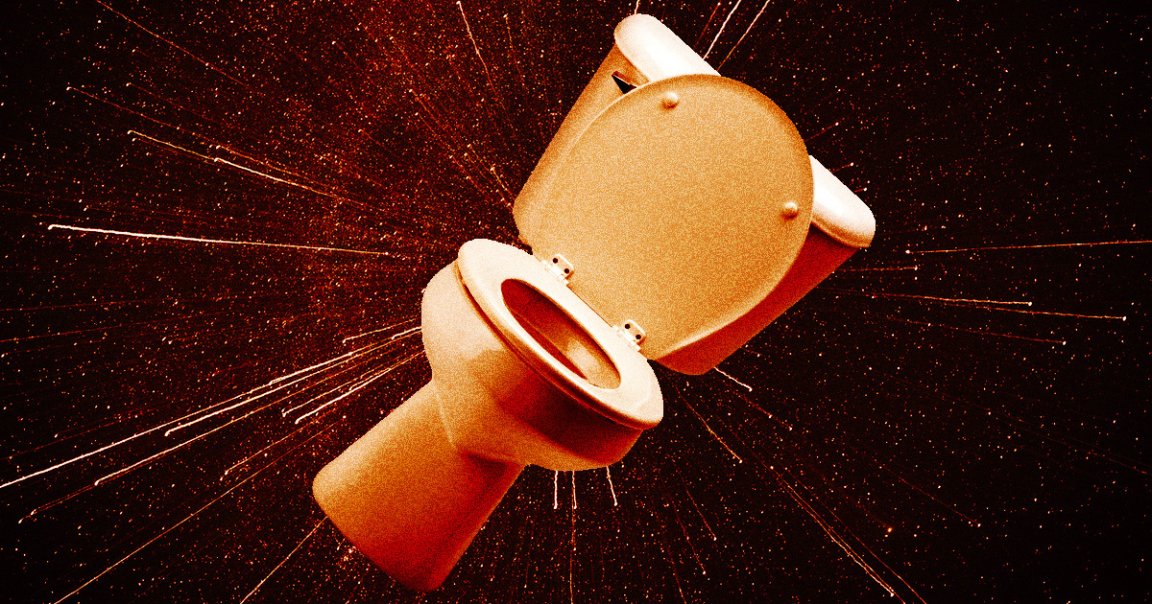
This past week, a crew of private space tourists — carried by a vehicle built by SpaceX and operated by Axiom Space — arrived at the International Space Station for the vacation of a lifetime.
And because everybody poops, once they arrived they had to confront the grim realities of using the restroom in microgravity.
NASA seemed to allude to the struggles in a cursory blog post, saying the space tourists had “practiced” what it euphemistically referred to as “hygiene practices.”
As the good people at Gizmodo pointed out, that almost certainly entails the fraught process of reliving oneself in orbit.
Because using the restroom here on Earth depends very much on gravity, doing so in space has long demanded the ingenuity of scientists. Never forget, for instance, a noisesome incident during the 1969 Apollo 10 mission, when the crew were forced to contend with a horrible situation extremely far from Earth.
“Give me a napkin quick,” commander Tom Stafford said, according to the official NASA transcript. “There’s a turd floating through the air.”
Modern technology has yet fully deal with the challenge. The current generation of space commodes work by sucking both liquid and solid waste into tubes, but people involved say the stench can be appalling.
There’s also the issue that resources in space are precious, meaning that everything possible needs to be recycled. Back in the summer of 2020, it was announced that the Space Station would be getting a new toilet that, uh, recycles the water out of fecal matter for reuse — only for NASA to come back to say that it was calling for new lavatory designs for the forthcoming Artemis moon missions due to the unique challenges of hitting the porcelain throne off-world.
Private spaceflight companies have yet to overcome the challenge. SpaceX, for one, admitted in September 2021 that a previous crop of space tourists had struggled with waste management during a crewed mission. A month after that, we got more information when SpaceX revealed that it had fixed a problem on one of its Crew Dragon capsules in which its space toilet, which relies on two separate vacuum tubes for numbers one and two, was leaking and spraying urine onto the floor of the craft.
“We didn’t really even notice it, the crew didn’t even notice it, until we got back,” SpaceX’s Bill Gerstenmaier told The New York Times at the time. “When we got the vehicle back, we looked under the floor and saw the fact that there was contamination underneath the floor of Inspiration4.”
Less than a year after that, toilet shenanigans continued to ensue when it was reported that during Axiom’s first mission to the ISS, the toilets on the American side weren’t working for some hours, which required those on that side of the international divide to ask the Russians if they could use their facilities.
“The Russians were very cordial, very accommodating,” Ax-1 tourist Larry Connor told CNN of the debacle. “We operate as one team up there and they said, ‘Hey, come on over and use ours.'”
In other words, space remains a hostile environment in ways both large and small — and no amount of training on the ground will fully prepare space travelers, no matter how wealthy, for the reality of life in orbit.
More on space tourism: SpaceX Tourists Charting New Frontiers in Product Placement